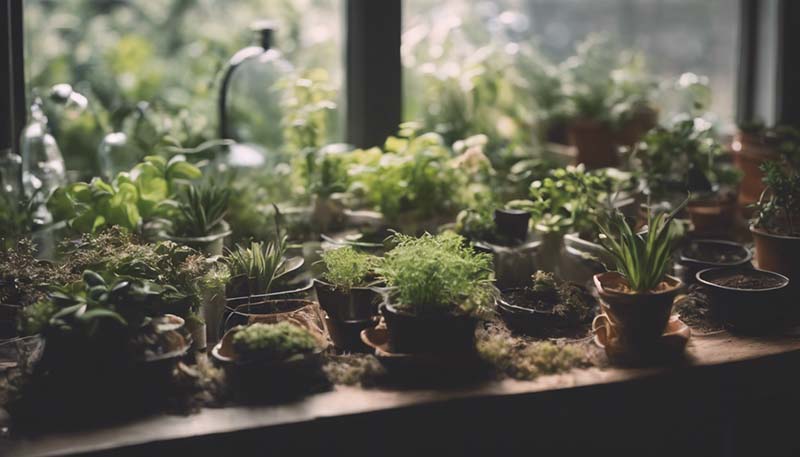Introduction
Indoor gardening is a rewarding hobby that can bring a sense of tranquility and satisfaction to your daily life. Not only does it beautify your living space, but it also provides a source of fresh herbs, vegetables, and flowers, while improving air quality. Whether you're a beginner or an experienced gardener, following these five easy steps can lead to a thriving indoor garden.
Step 1: Choose the Right Space
The first step to indoor gardening success is selecting the appropriate location for your plants. Consider the following factors:
Light
Different plants have different light requirements. Some thrive in full sun, while others prefer indirect light or shade. Observe the natural light in your home throughout the day and choose a spot that matches your plants' needs.
Advertisement
Temperature
Consistent temperature is crucial for plant growth. Most indoor plants prefer a stable temperature between 65-75°F (18-24°C). Avoid placing plants near drafts, air vents, or radiators.
Space
Measure the area where you plan to set up your indoor garden and choose plants that will fit comfortably without overcrowding.
Step 2: Select the Right Plants
Choose plants that are suitable for indoor cultivation and can adapt well to the conditions in your home. Here are some popular choices:
- Pothos - Easy to care for and can thrive in low light.
- Spider Plant - Known for its air-purifying qualities and adaptability.
- Aloe Vera - Requires minimal watering and offers medicinal benefits.
- Herbs - Basil, mint, and rosemary are great for adding flavor to your cooking.
- Succulents - Require little maintenance and can store water in their leaves.
Step 3: Use the Proper Containers and Soil
Invest in containers that have drainage holes to prevent overwatering. Choose the right soil mix for your plants:
Drainage
All pots should have drainage holes to allow excess water to escape, preventing root rot.
Soil
Use a high-quality potting mix that provides good aeration and drainage. Some plants may require specific soil mixes, so be sure to research your plants' needs.
Step 4: Water and Feed Regularly
Watering is a critical aspect of indoor gardening. Overwatering is a common mistake that can lead to root rot and plant death. Here are some guidelines:
Watering
Water your plants when the top inch of soil feels dry to the touch. The frequency will vary depending on the plant species and the environment.
Feeding
Use a balanced liquid fertilizer every few weeks during the growing season. Follow the package instructions for the correct dosage.

Step 5: Monitor and Maintain
Regular care and attention are key to maintaining a healthy indoor garden. Keep an eye out for pests and diseases, and address any issues promptly.
Pest Control
Inspect your plants regularly for signs of pests. If you find any, use organic methods to control them, such as neem oil or insecticidal soap.
Pruning
Prune your plants to remove dead leaves and promote bushier growth. This also helps maintain the shape and size of your plants.
Repotting
Repot your plants every couple of years or when you notice they've outgrown their current pots. This gives them fresh soil and more room to grow.
Conclusion
Indoor gardening can be a fulfilling and enjoyable hobby that brings numerous benefits to your home. By following these five easy steps, you'll be well on your way to creating a lush, beautiful indoor garden that you can take pride in.
Comment